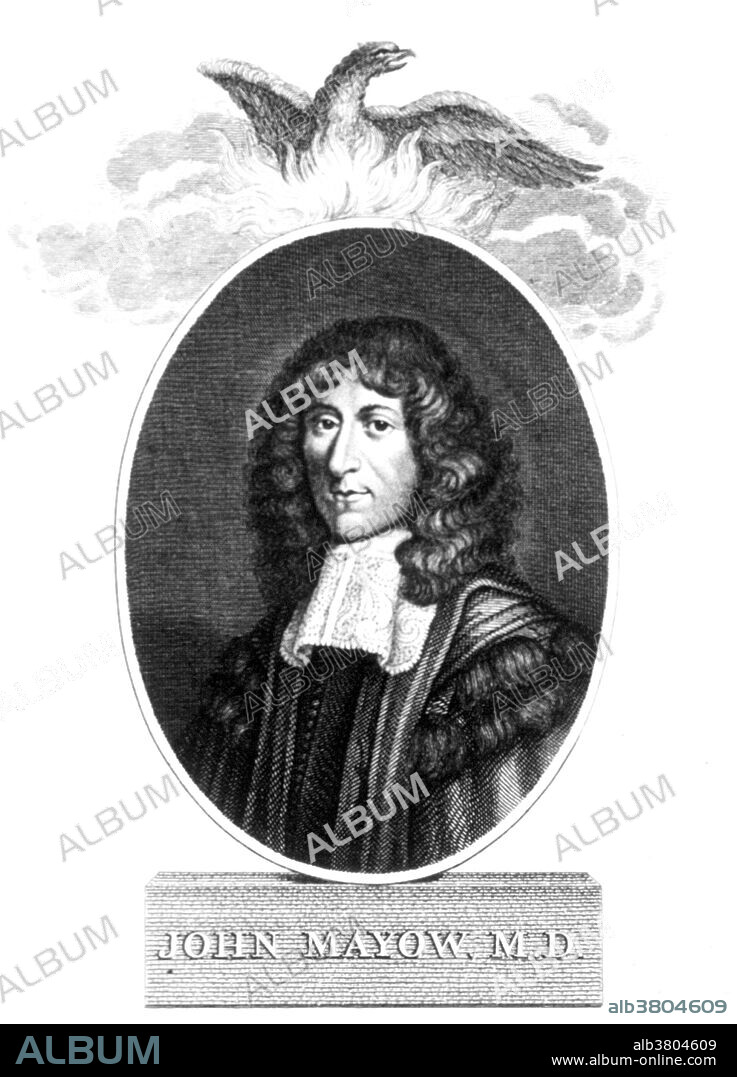alb3804609
John Mayow, English Pneumatic Chemist and Physiologist

|
Zu einem anderen Lightbox hinzufügen |
|
Zu einem anderen Lightbox hinzufügen |



Haben Sie bereits ein Konto? Anmelden
Sie haben kein Konto? Registrieren
Dieses Bild kaufen

Titel:
John Mayow, English Pneumatic Chemist and Physiologist
Untertitel:
Siehe automatische Übersetzung
John Mayow (1640-1679) was an English chemist, physician, and physiologist who worked in a field that is sometimes called pneumatic chemistry. An investigator much in advance of his time. In 1668 Mayow published two tracts, on respiration and rickets, and in 1674 they were reprinted (with three additional tracts), as Tractatus quinque medico-physici. Mayow showed that fire is supported not by the air as a whole but by a more active and subtle part of it. This part he called "spiritus igneo-aereus," or sometimes "nitro-aereus". He concluded that this constituent of the air is necessary for life, and supposed that the lungs separate it from the atmosphere and pass it into the blood. He held that it was the combustive principle in air which turned dark venous blood to bright arterial blood. Mayow recognized the existence of oxygen, under the guise of his "spiritus nitro-aereus," as a separate entity distinct from the general mass of the air. Unfortunately, Mayow died at an early age (39), and no one carried on his work. Nearly a century later Antoine Lavoisier's work demonstrated that some of Mayow's theories about respiration and combustion were correct.
Bildnachweis:
Album / NLM/Science Source
Freigaben (Releases):
Model: Nein - Eigentum: Nein
Rechtefragen?
Rechtefragen?
Bildgröße:
2700 x 3750 px | 29.0 MB
Druckgröße:
22.9 x 31.8 cm | 9.0 x 12.5 in (300 dpi)
Schlüsselwörter:
BERÜHMT • BERÜHMTE PERSÖNLICHKEIT • CHEMIE • CHEMIKER • EUROPAEER (F M) • EUROPAEER • EUROPÄER (F M) • EUROPÄER • EUROPÄISCH • ILLUSTRATION • ILLUSTRATIONS • MANN • NATURWISSENSCHAFTLER • NOTABEL • PERSON • PERSöNLICHKEITEN • PERSÖNLICHKEITEN • PHYSIOLOGIE • PORTRAIT • PROMINENZ • RACHITIS • WISSENSCH.: CHEMIE • WISSENSCHAFTLER • WISSENSCHAFTLICH
 Pinterest
Pinterest Twitter
Twitter Facebook
Facebook Link kopieren
Link kopieren Email
Email
